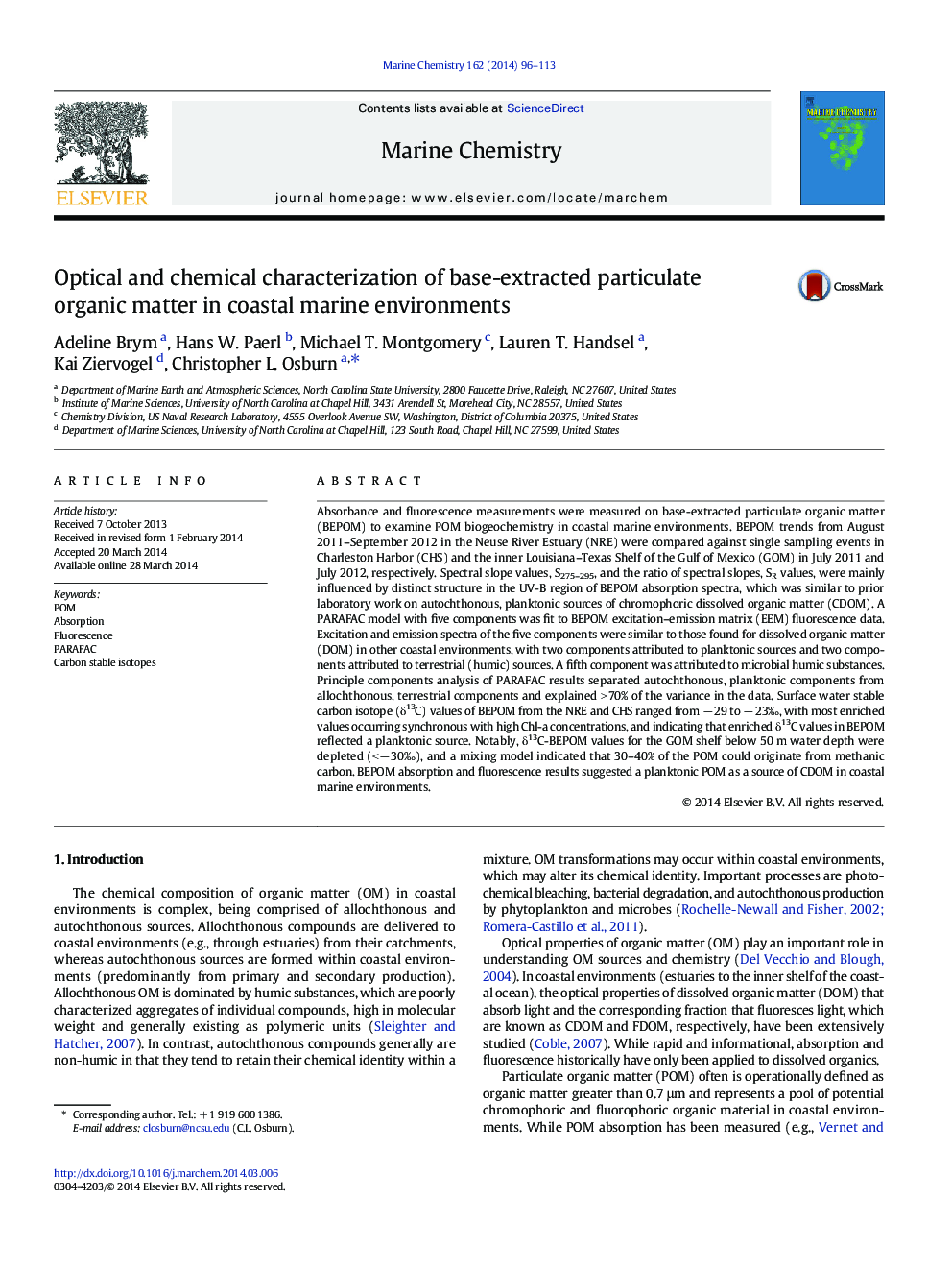| Article ID | Journal | Published Year | Pages | File Type |
|---|---|---|---|---|
| 7699528 | Marine Chemistry | 2014 | 18 Pages |
Abstract
Absorbance and fluorescence measurements were measured on base-extracted particulate organic matter (BEPOM) to examine POM biogeochemistry in coastal marine environments. BEPOM trends from August 2011-September 2012 in the Neuse River Estuary (NRE) were compared against single sampling events in Charleston Harbor (CHS) and the inner Louisiana-Texas Shelf of the Gulf of Mexico (GOM) in July 2011 and July 2012, respectively. Spectral slope values, S275-295, and the ratio of spectral slopes, SR values, were mainly influenced by distinct structure in the UV-B region of BEPOM absorption spectra, which was similar to prior laboratory work on autochthonous, planktonic sources of chromophoric dissolved organic matter (CDOM). A PARAFAC model with five components was fit to BEPOM excitation-emission matrix (EEM) fluorescence data. Excitation and emission spectra of the five components were similar to those found for dissolved organic matter (DOM) in other coastal environments, with two components attributed to planktonic sources and two components attributed to terrestrial (humic) sources. A fifth component was attributed to microbial humic substances. Principle components analysis of PARAFAC results separated autochthonous, planktonic components from allochthonous, terrestrial components and explained > 70% of the variance in the data. Surface water stable carbon isotope (δ13C) values of BEPOM from the NRE and CHS ranged from â 29 to â 23â°, with most enriched values occurring synchronous with high Chl-a concentrations, and indicating that enriched δ13C values in BEPOM reflected a planktonic source. Notably, δ13C-BEPOM values for the GOM shelf below 50 m water depth were depleted (<â 30â°), and a mixing model indicated that 30-40% of the POM could originate from methanic carbon. BEPOM absorption and fluorescence results suggested a planktonic POM as a source of CDOM in coastal marine environments.
Related Topics
Physical Sciences and Engineering
Chemistry
Chemistry (General)
Authors
Adeline Brym, Hans W. Paerl, Michael T. Montgomery, Lauren T. Handsel, Kai Ziervogel, Christopher L. Osburn,
